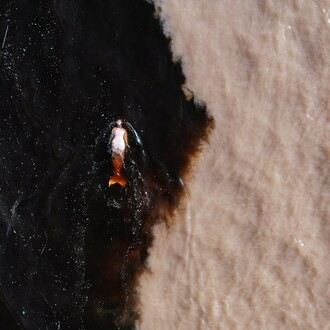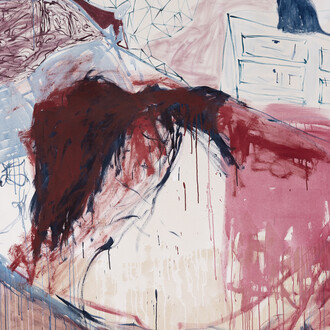Huxley-Parlour are delighted to announce Flora’s cloak, a group exhibition in their Wiltshire gallery that brings together works that provide an alternative, networked way of understanding and describing the body and the world in which the body exists. Combining both universal and personal mythologies, the eight exhibited artists use guration to explore cycles of growth and decay, of fertility, ritual and interconnection.
The title of the exhibition refers to a 1923 work on canvas by Gluck, in which Flora, the goddess of Spring, is transformed into a totemic symbol of yonic power, embodying the interrelation between body and nature.
In Jane Hayes Greenwood and Molly Greene’s work, biomorphic forms contort to create surreal landscapes. Greene’s work investigates the ambiguous space between boundary and body by transforming the microscopic into the macroscopic. Greenwood is interested in the transformative qualities of plants, exploring how owers are intertwined in human histories, mythmaking and symbolism. Bryan Rogers’ compositions bring the male nude and densely layered natural forms into intimate dialogue, where bodies and branches merge and mirror one another. Limbs meet organic shapes in owing, rhythmic patterns, blurring the line between the human and the organic.
Using a non-hierarchical web of references, Xanthe Burdett entangles bodies and stories into layered works where the line between the human and non-human wavers and stretches. Foliaceous skin wraps the gures in Burdett’s work, whose gossamer bodies seem to dissolve into painterly ground. Nettle Grellier’s gures are sensorially connected to the landscape. Symbols of fertility, growth and nourishment adorn swollen bellies, open mouths and exploratory hands. Grellier’s visceral and tactile portrayals of bodily experiences explore how we are enmeshed in a temporal, ephemeral world.
Laila Tara H’s imagery is composed of repeated motifs, drawn from Indo/Persian miniature traditions, that form open-ended narratives. In her work Rain/Sprinkler disembodied hands caress and seek, while tulips coexist with ames that threaten to devour them. Charred by the re the blooms will, however, die back and re-emerge in spring. Anousha Payne, too, forms her own iconography by drawing inspiration from her dual Irish and Indian heritage. Her work explores transformation and storytelling by revealing the boundaries between animals, humans, and their relics. Lian Zhang constructs scenes both from personal memories, symbolism and Taoist philosophy. Hybrid, animistic gures coalesce with their environments in mystical, fractured landscapes.
The works in the exhibition refute utopia in favour of more visceral, bodily and complex compositions. Mimesis falters in favour of uidity, as the natural world provides a means for reimaginging how embodiment can be expressed: rhizomatic, rhythmic, non-hierarchical.








